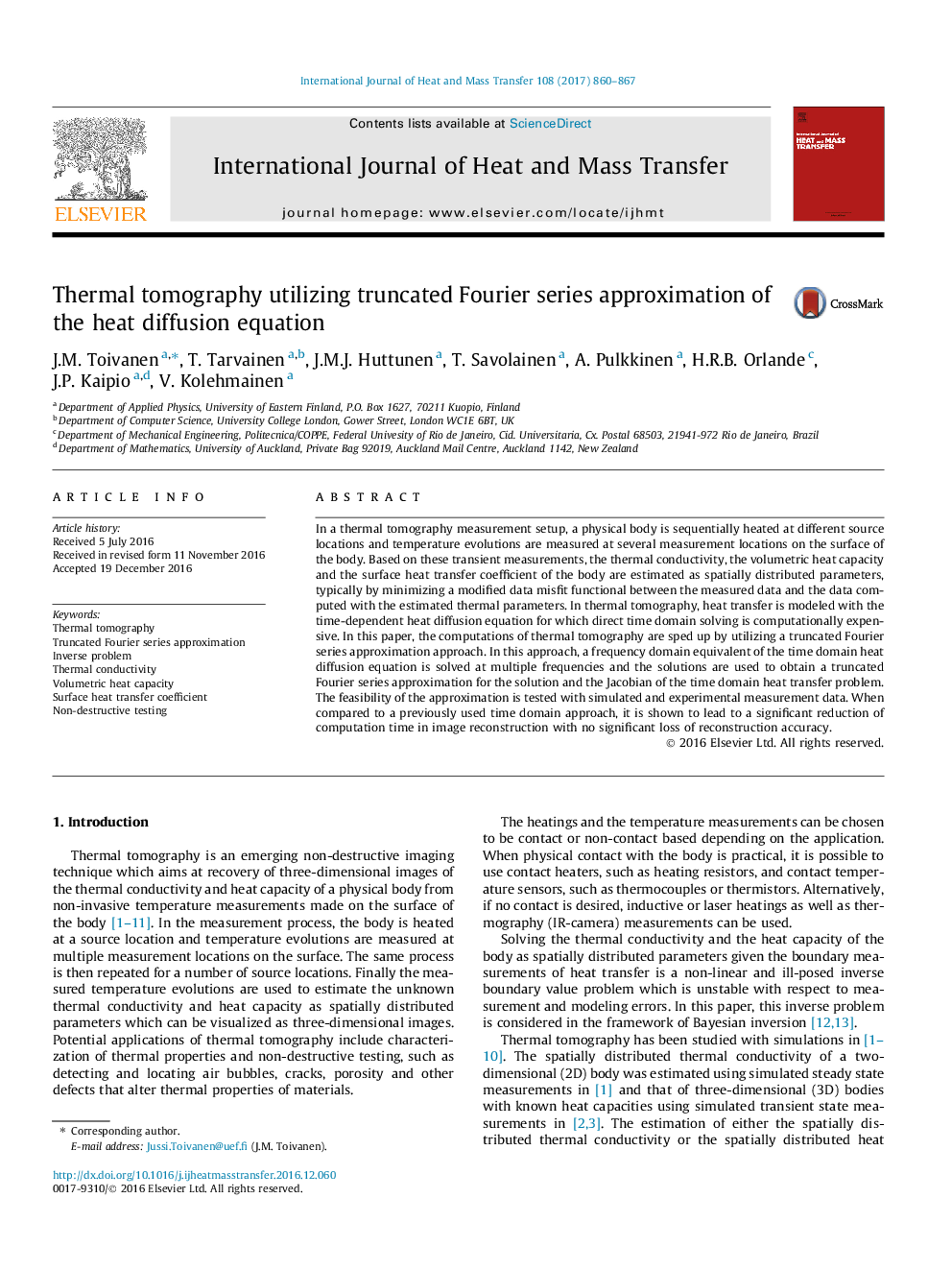| Article ID | Journal | Published Year | Pages | File Type |
|---|---|---|---|---|
| 4994326 | International Journal of Heat and Mass Transfer | 2017 | 8 Pages |
Abstract
In a thermal tomography measurement setup, a physical body is sequentially heated at different source locations and temperature evolutions are measured at several measurement locations on the surface of the body. Based on these transient measurements, the thermal conductivity, the volumetric heat capacity and the surface heat transfer coefficient of the body are estimated as spatially distributed parameters, typically by minimizing a modified data misfit functional between the measured data and the data computed with the estimated thermal parameters. In thermal tomography, heat transfer is modeled with the time-dependent heat diffusion equation for which direct time domain solving is computationally expensive. In this paper, the computations of thermal tomography are sped up by utilizing a truncated Fourier series approximation approach. In this approach, a frequency domain equivalent of the time domain heat diffusion equation is solved at multiple frequencies and the solutions are used to obtain a truncated Fourier series approximation for the solution and the Jacobian of the time domain heat transfer problem. The feasibility of the approximation is tested with simulated and experimental measurement data. When compared to a previously used time domain approach, it is shown to lead to a significant reduction of computation time in image reconstruction with no significant loss of reconstruction accuracy.
Keywords
Related Topics
Physical Sciences and Engineering
Chemical Engineering
Fluid Flow and Transfer Processes
Authors
J.M. Toivanen, T. Tarvainen, J.M.J. Huttunen, T. Savolainen, A. Pulkkinen, H.R.B. Orlande, J.P. Kaipio, V. Kolehmainen,
